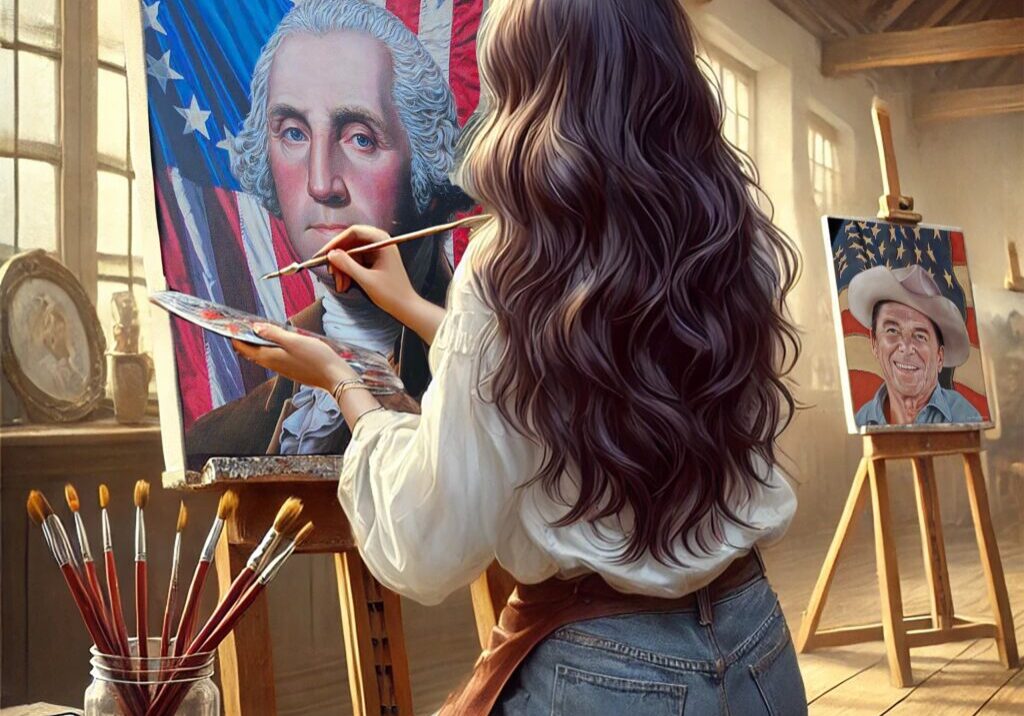
Unnamed but Unforgotten: The Hidden Hands Behind Revolutionary Colors
The Revolution was sewn by many hands – some recorded, most not. For every documented figure like Rebecca Young or Margaret Manny, there were dozens of unnamed women who stitched in silence. Seamstresses, widows, daughters of soldiers, church members, and hired artisans worked behind closed doors. They made regimental flags, signal banners, and militia pennants. Their thread traveled. Their fabric spoke. But their names rarely made it onto the record. In the mural, I tried to paint them anyway.
We know they existed because their work survives. Across museums and private collections, flags from the era show the same hallmarks – tight hand stitching, customized color combinations, and practical reinforcements made for field use. Some bear initials. Most do not. They were not signed. They were delivered, carried, and lifted in parades or battle without ceremony. But the hands that made them deserve a place in our collective memory. These women were not necessarily artists by training. Many were trained by necessity. They had access to cloth, needles, and patterns. They could sew quickly, accurately, and with attention to durability.
Whether working from home or as part of an informal workshop, they took verbal instructions and turned them into shape and symbol. Pine trees. Anchors. Liberty caps. Crescents. These elements were not stamped or mass-produced. They were laid out by eye and sewn into being. In the mural, I created composite figures to represent these hidden contributors. A pair of hands holds a bolt of faded cloth. A figure stands at a window, holding a folded banner she has just finished. Her face is not turned to the viewer. She is not meant to be recognized. She is meant to be remembered. That distinction matters. It gives space for the unrecorded while refusing to let their absence erase their impact. What makes these women so extraordinary is their willingness to create without credit.
To participate in a national struggle through the tools they already knew. Their kitchen tables became drafting spaces. Their evening hours became extensions of the battlefield. Their stitches joined more than fabric. They joined the cause. There is something humbling about that kind of contribution. It reminds us that art does not always announce itself. Sometimes it enters through the side door, folded in linen, packed into a soldier’s gear. It flies high without ever revealing who touched it first. But when we see it – when we see the thread, the angle, the wear – we know.
The Revolution did not have one flag maker. It had hundreds. It had thousands. Women whose hands moved with conviction. Women who remained unnamed, but who left a signature all the same. And those signatures, though hidden in the seams, still wave.

